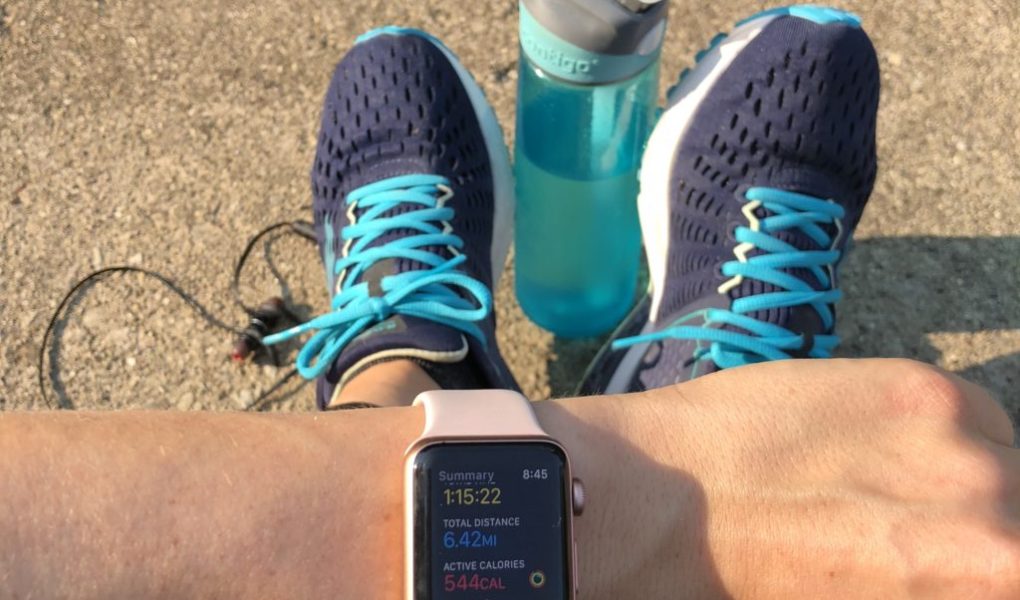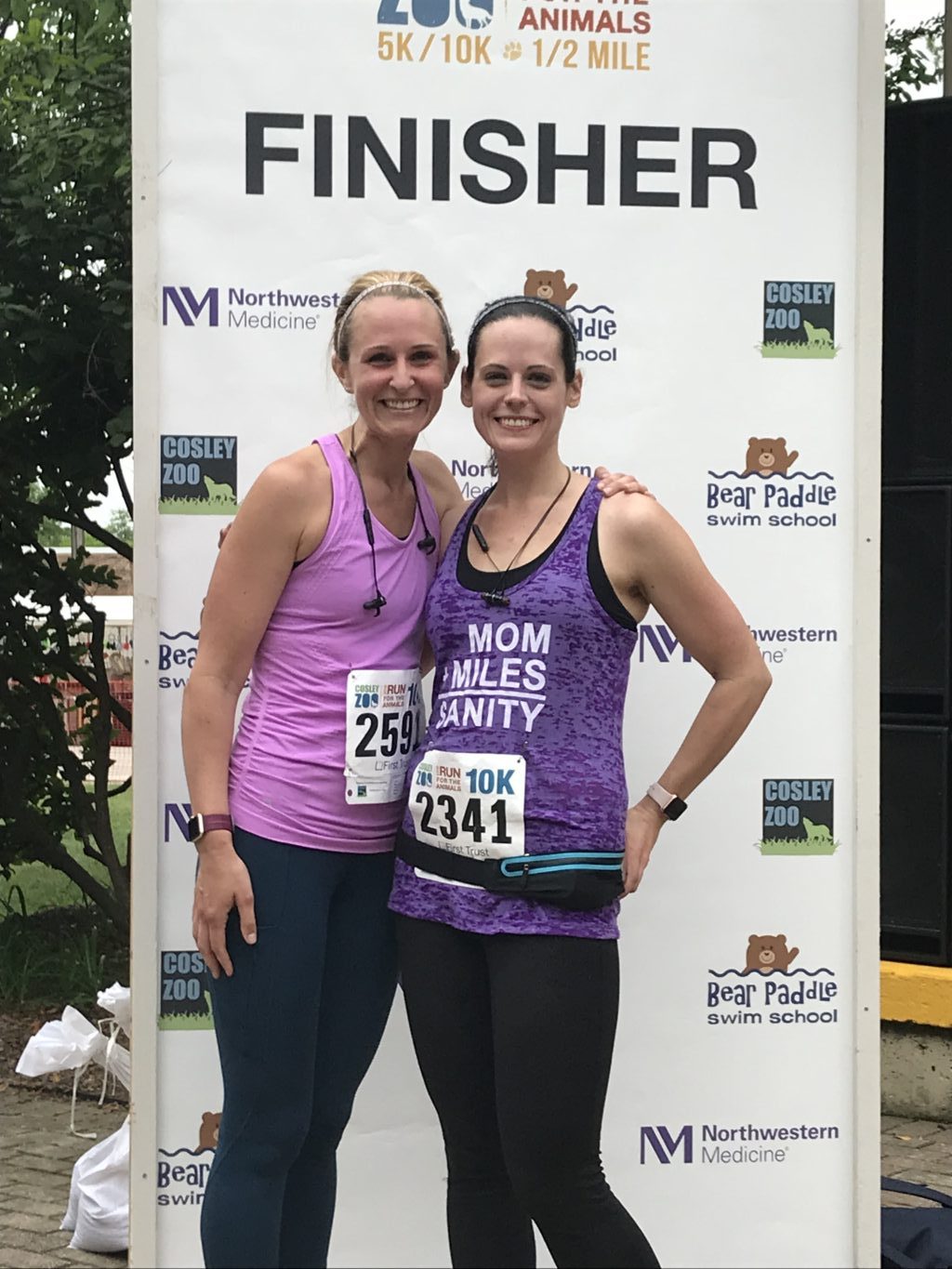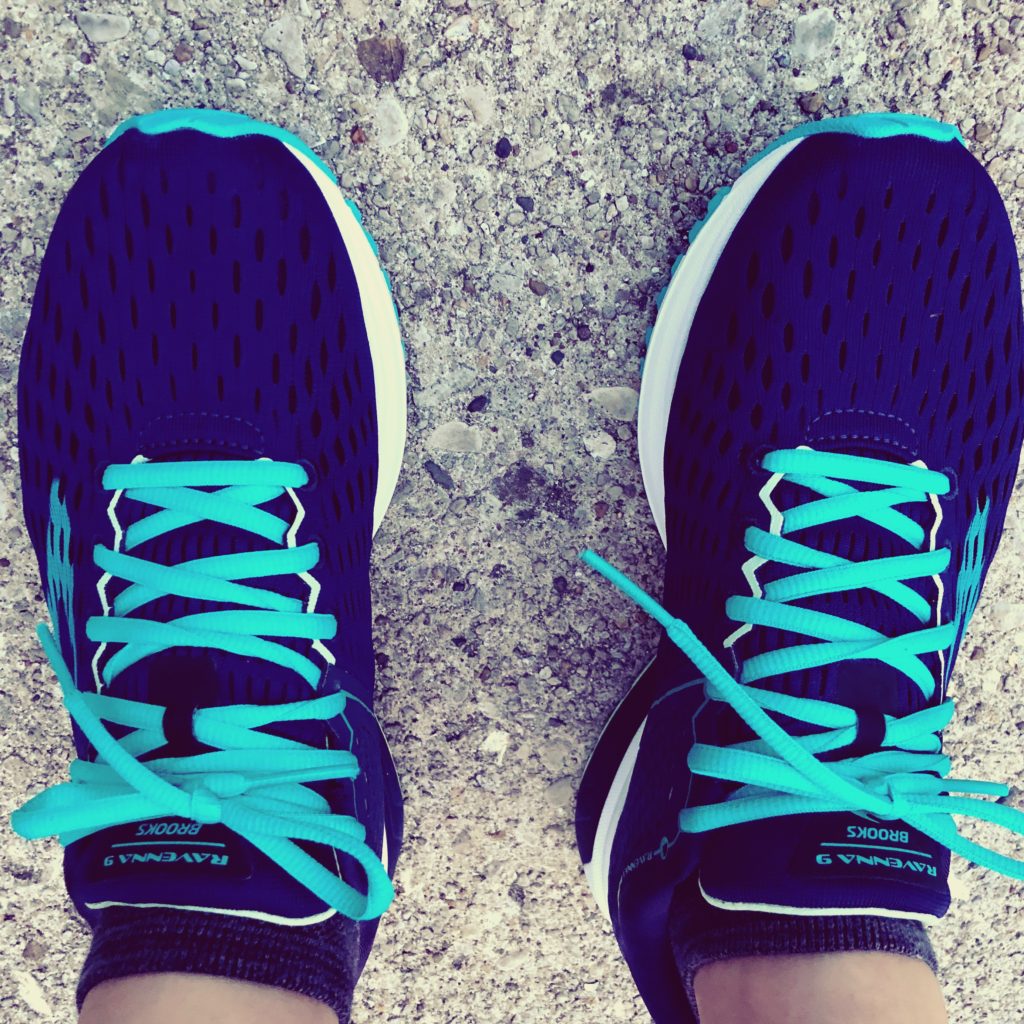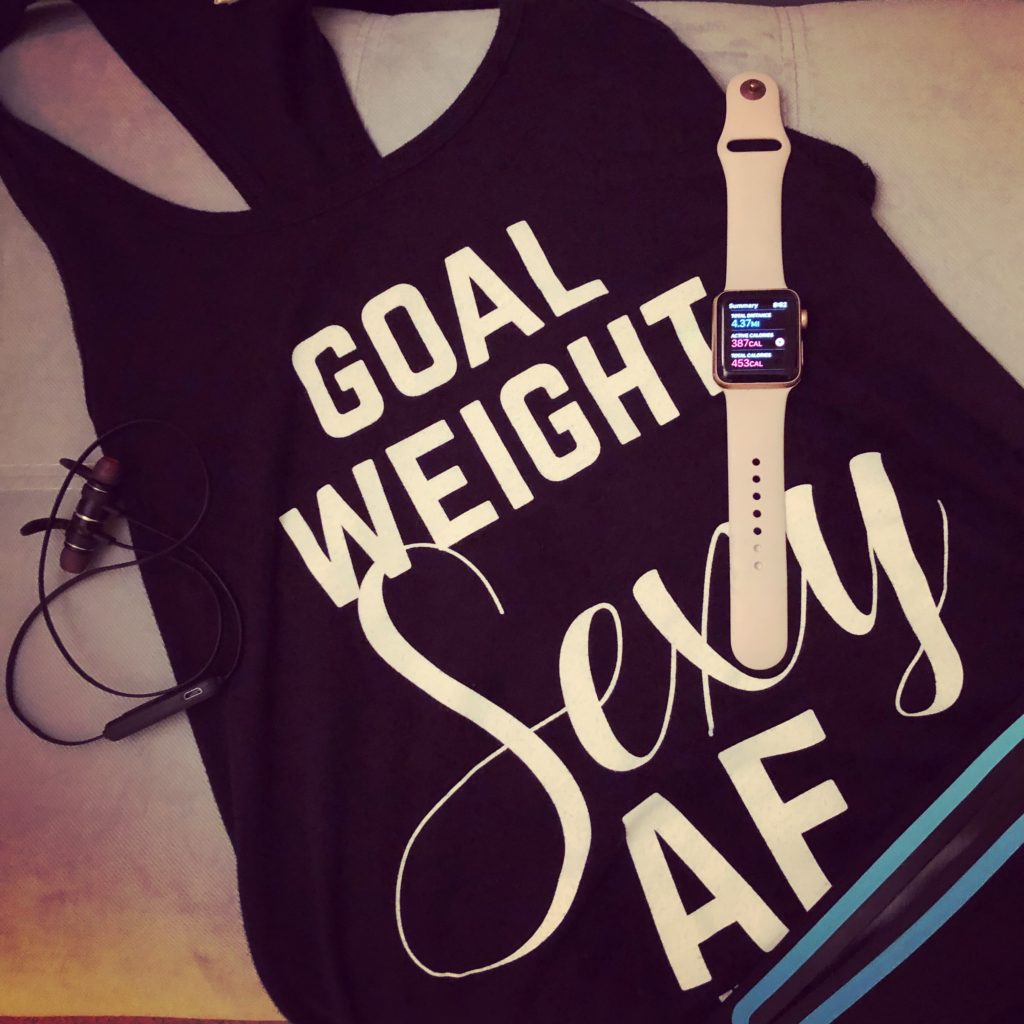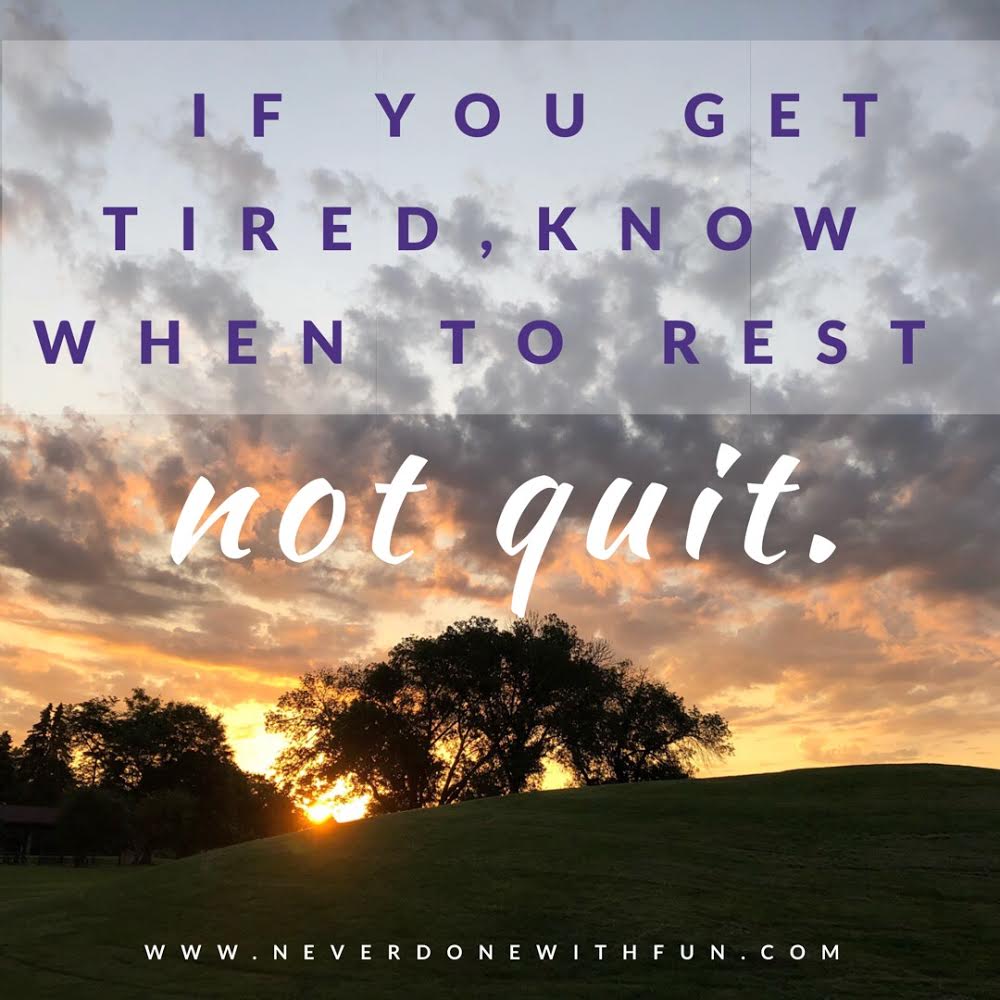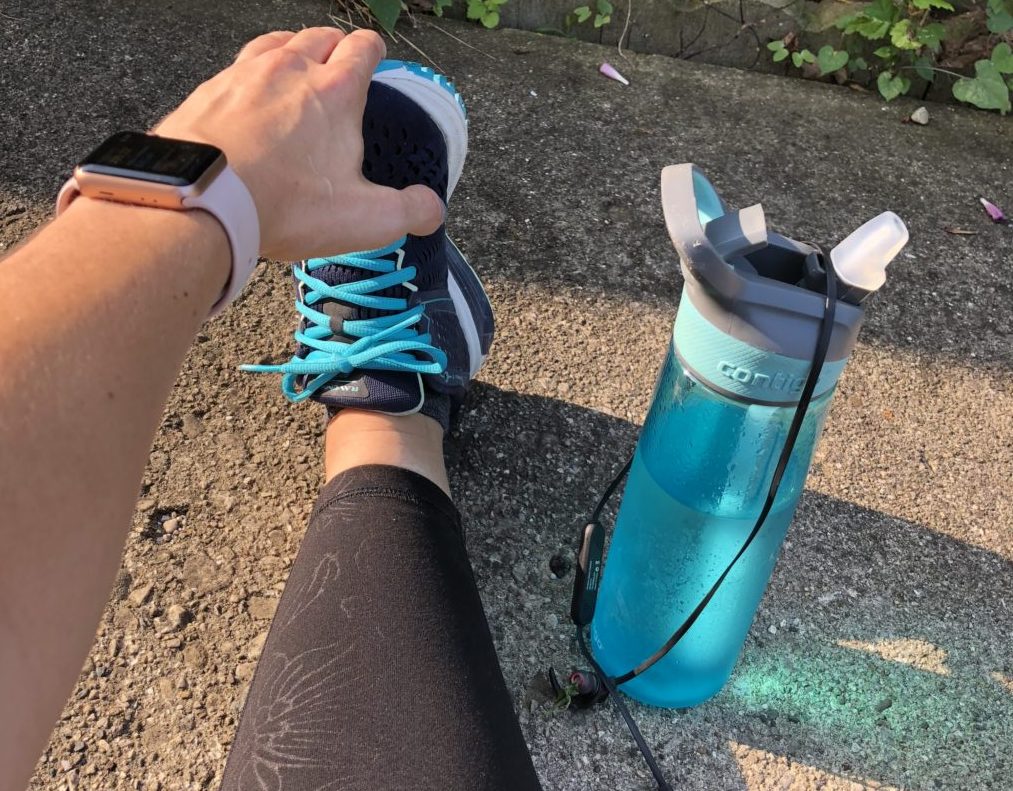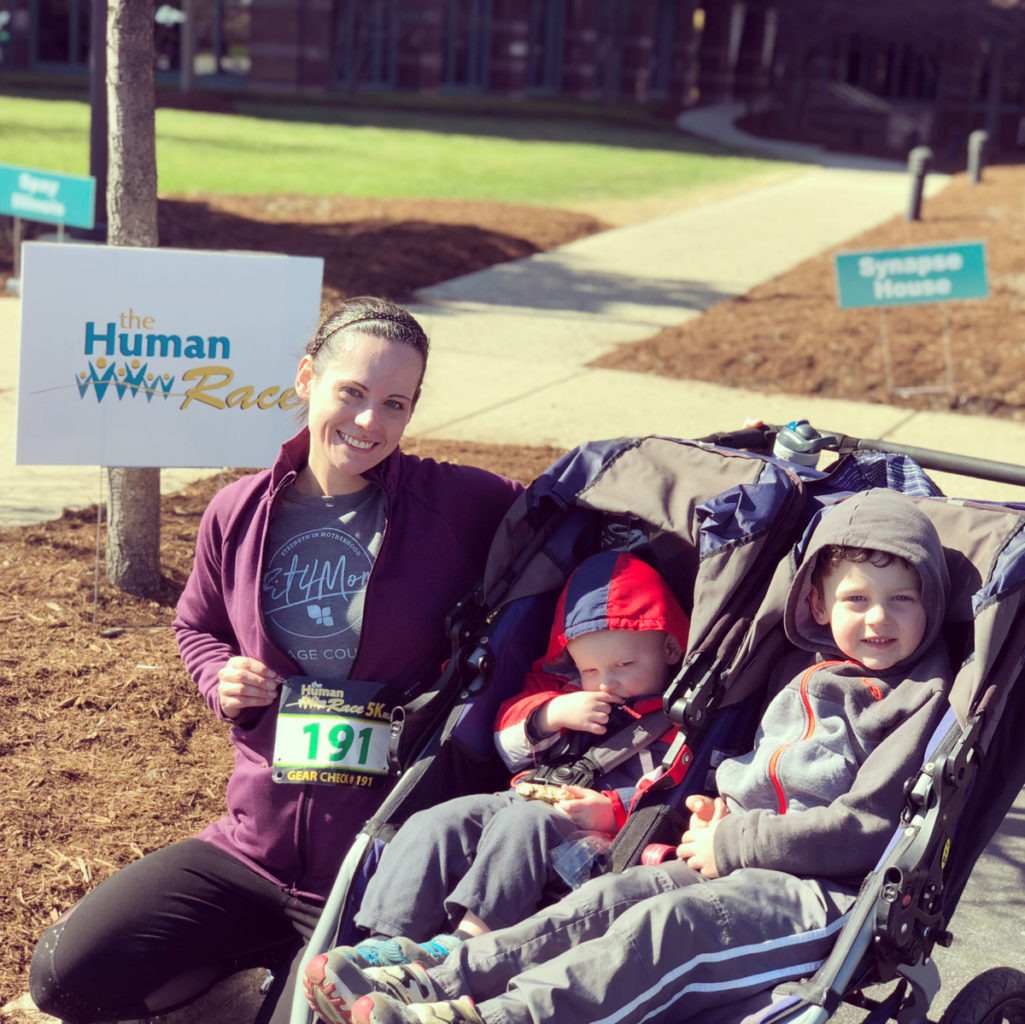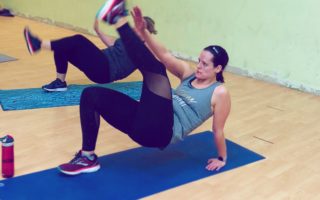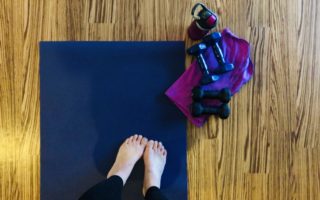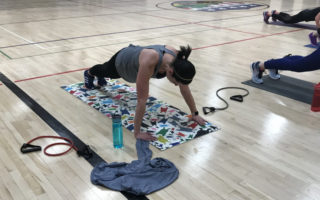If you had told me a year ago that going for a run outside would become my go-to stress relief, I probably would have laughed.
I kept flashing back to junior high PE class — remember having to run the mile then? All I saw in my head when I thought about running was junior high me, sweating and red-faced and huffing and puffing as I barely finished a mile in well over 12 minutes. Meanwhile, my classmates were breezing in at 7, 8, 9 minutes. Pretty mortifying for an insecure, out-of-shape teenager.
But as an adult, progressing in my fitness journey, I grudgingly started to see the advantages to running. It’s free, for one. You do it on your own time and schedule, for another — ideal for busy motherhood. And it’s an opportunity to get in some serious cardio…not necessarily what I wanted but definitely what my body needed to get to the next level.
So I gritted my teeth, laced up my running shoes, and started doing laps at the park nearby. It wasn’t pretty, and I felt exactly like that junior high kid again.
The difference was I didn’t give up and just walk it this time. I stuck with it. I toughed it out. And each mile I logged, I found I hated running a little less.
If I can become a runner, anyone can become a runner. Here are my tips for getting started.
This post contains affiliate links. As an Amazon Associate, I earn from qualifying purchases. Read my full disclosure policy for all the boring details.
10 Tips for Beginning Runners
1. Start slow and small.
The very first time I decided to start running, I set a goal that I would run driveway distances only. Even running a block without stopping seemed intimidating, so I set that first goal really, really small. I alternated between a power walk and a jog, building up from one driveway length to two driveway lengths to one block to two blocks, and so forth. Before I knew it, I had run a mile without walking. I think I had a legitimate runner’s high from the accomplishment of that 1 mile.
Keep adding distance to your runs; you’ll be surprised at how quickly you can increase your mileage. At this time last year, I was running 1 mile without walking and feeling proud. This spring, I realized I could basically get in a 5K for my evening run, and now those evening runs have extended to 5 or 6 miles.
2. Get outside.
I’m still intimidated by the treadmill. But running outside is a no-brainer. You don’t have to figure out what your pace is; you just go and your pace sets itself, at least in the beginning. Plus, running outside is more of a challenge because you are dealing with wind, weather conditions, elevations, uneven surfaces, and more. But most importantly, running outside is interesting. There are new things to see, people to watch, houses to covertly check out. When I run in my neighborhood, I’m always on the hunt for new real estate. If I did all of my running indoors on a treadmill, I guarantee I’d still be barely making it 2 miles at a time. The monotony of the treadmill just isn’t for me. But getting outside with the breeze in my hair, watching the sun come up or set – that’s why I’ve come around to loving running.
3. Figure out what motivates you when you run.
When I first started, I didn’t wear headphones at all. I just ran. The quiet I found in my head outside was enough, and I used the running time to work through things I didn’t have time to process any other time. As I started to increase my distance, I tried running to music for motivation. I found I liked it, and now I frequently run to the very same channel on the Rock My Run app. (It’s free if you don’t mind ads every 15 minutes or so!) The Hamilton soundtrack is my other favorite, especially for a longer distance run.
Explore whether you’re a solo runner or you prefer a partner or group for motivation and pacing. I’m all about the solo runs because I love that quiet in my head and the “me time” to think. Plus, I’m fitting runs in wherever I can, even when the sun is going down or isn’t even up yet in the morning. But I like to train for a race goal with a friend to stay motivated. On Race Day, there’s something both reassuring and competitive about being at the starting line together. Even though I know she’ll finish whole minutes ahead of me, I push myself harder knowing she’s already at the finish line, waiting to congratulate me when I cross it too.
4. Multitask while you run.
Recently, I’ve gotten even smarter and started listening to podcasts on my long runs. Listening to podcasts or audiobooks rather than music is helpful when I’m focusing on distance because it keeps me at a slower pace than music does, letting me stay slow and steady to meet my mileage goal. Plus, it lets me multitask: I can listen to a business podcast and feel like I’m working while working out. This discovery has been revolutionizing my life this month.
5. Make sure you have the right shoes.
Don’t get too far into running before making sure you have shoes that feel good on your feet and work for your body and goals. I got fitted at Naperville Running Company for the first time last summer, and it’s changed my fitness game. I won’t buy shoes on my own ever again. If you’re going to start running with any consistency, I highly recommend being fitted. Running is inherently hard on your body, and having the right shoes can make the difference in preventing injury.
6. Invest in just a little bit of gear to make running easier and safer.
My first months of running were just me in my running shoes with my FitBit, nothing else. You could spend hundreds of dollars on other running gear, but I don’t consider myself a “serious” runner yet. I can’t justify the expense. Recently, I invested a few bucks in some minimal gear.
These are the items that have made a difference:
Wireless magnetic headphones. These Bluetooth wireless headphones stay in place, even when I’m really sweaty after a long run in high humidity, and they magnetize around my neck when they’re not in my ears. For under $30 from Amazon Prime, I’m sold. Sound quality is totally acceptable, and they’re comfortable too.
Runner’s belt/waist pack. Prior to owning this, I usually ran without anything – I left my phone at home and didn’t even listen to music. But as I’ve started running on the Prairie Path, often at dusk, safety comes first. I need my phone on me. I wanted the most minimal fanny pack-style runner’s belt in existence, something that could hold my keys and my phone and that’s it. This one does the trick. Maneuvering my phone in and out to change up music is fairly simple, and it stays in place without being too bulky or obtrusive, even with iPhone X inside. Bonus that it’s also one of the least expensive options out there.
Apple Watch. Although this doesn’t count as inexpensive and is used far beyond running purposes, it’s still a no-brainer. Once I started getting serious about fitness, my FitBit Alta wasn’t cutting it anymore. I upgraded to Apple Watch Series 3 so I could have better metrics and better communication available on my wrist at all times. Now I feel naked whenever I have to take it off for “dress” occasions. For running , it tracks outdoor and indoor runs separately, and learns your own rhythms and paces to calculate distance more accurately. When I run, I like to be able to have my ever-adjusting pace easily visible on my wrist to motivate me to pick it up or go the extra 0.2 to hit a new distance record. I also feel safer with the connection to my phone and the Emergency SOS feature right at my fingertips.
7. Take your rest days.
I always give myself a day or rest or cross-training in between running days to allow my muscles to heal. I think this is especially important when you’re first starting out. Running is great exercise on so many levels, and I’ve found that I like how it changes my body when I’m running consistently. But it can also be hard on your joints and your muscles (and hello, your pelvic floor), so be sure that you are take rest days. One day on, one day off is the best way to let your muscle recover and build your strength and endurance gradually.
8. Set different goals for different runs.
I try to get in 2-3 runs per week depending on what else is on my schedule. I make sure I get in one endurance run per week, my so-called “long run” (except that it’s really not that long). I don’t worry about pace for this run. I just keep moving forward and make it my goal not to walk at all. My second run of the week is more of a strength run, where I focus on speed. A short, 30-minute power run is a great way to get in a workout when you don’t have a lot of extra time to spare.
Finding time for a long run can be tricky to fit into your schedule, so experiment to figure out what works best for you. You’ll find consistency easier to achieve if you can find that ideal time slot and make it a routine. Weekend mornings can be a great time for a long run, but I’ve found that strangely, Friday night works great for me. At the end of the work week, a long, slow and steady run helps me decompress and go into the weekend feeling strong.
9. Listen to your body and warm up and stretch afterward.
I would never jump into a fitness class without doing a proper warmup, and I always stretch at the finish of a class. But I found myself literally running out my backdoor without any sort of warm-up and then collapsing onto the couch without a minute of stretch when I completed the run. Guess what? I had sore quads and sore ankles and sore shoulders. Treat running like you would any other exercise regime, and give yourself at least 5 minutes to warm up. I start out at a power walk and then move up to a slow jog before hitting my race pace stride. I finish the run with at least 5 minutes of cool-down power walking and a couple minutes of targeted stretching. This prevents injury and helps me feel a lot better the next day. A hot shower afterward keeps the muscles loose and if I’m feeling particularly achy, soaking in an Epsom salt bath feels incredible.
10. Sign up for a race.
Pick a local 5K and register for it to give yourself a goal to work toward. Having an end goal in sight motivated me to get outside and get those runs in. Your performance at the 5K (or 10K or half-marathon or whatever your goal is) is less important than having the goal to work toward. And once you crush that goal, set a new one.
I ran my first 5K in April. In June, I ran my first 10K. I’m signed up for the 8-mile Hot Cider Hustle in November as my next running goal, and I’m hoping to run a half marathon next spring if I can heal a weak ankle. Having these incremental goals has been key to my success and motivation as a reluctant runner, especially when the weather has been less than optimal for outdoor running.
I can say with a fair level of confidence that my body simply does not have 26.2 continuous miles in it, so you won’t see me running the Chicago Marathon anytime soon. But you might see me attempt 13.1 in the spring. Running progress doesn’t happen overnight but consistency and dedication is key. Six months ago, the longest I had ever run was 3.2 miles. But I just keep putting one foot in front of the other as I see where my feet will take me next.
Reluctant runners unite! You might discover (like I did) that you secretly love running. Tell me what you would add to this list for beginning runners with #NeverDoneWithFun!

